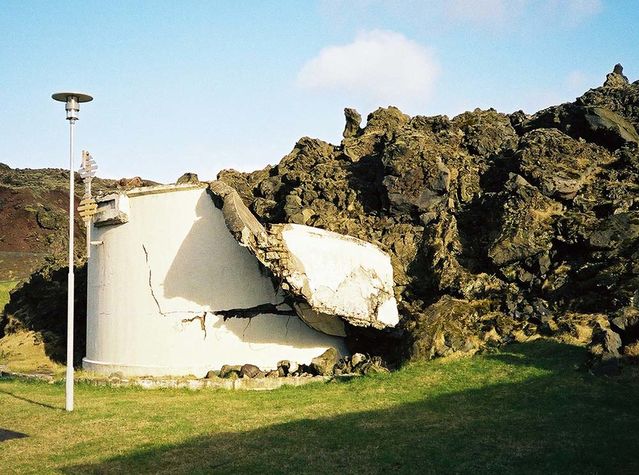Environment
Does Nature Play Disaster Games?
Disasters are not natural; our choices cause them.
Posted May 12, 2020 Reviewed by Matt Huston
Why do disasters happen? We often assume that it is humanity versus the environment that creates or averts natural disasters. After all, we are frequently told, nature bats last in this survival game. Science disagrees.

We are not really embroiled in a never-ending fight-to-the-death with nature. When a pandemic upends our lives, the fundamental reasons for why we see deaths and disruption are similar to a hurricane flooding New Orleans and an earthquake toppling buildings in Nepal.
They are all disasters—but none are strictly natural disasters. Disasters are caused by our choices, not just by nature. Hurricanes, earthquakes, landslides, blizzards, space weather, volcanic activity, and other environmental phenomena are not out to get us.
They have occurred for aeons, so we should not be surprised when they appear. Disaster research explains how and why we do and do not cope with these typical environmental processes and events.
For pandemics, microorganisms are continually infecting us in old and new forms, some more lethal than others. An important aspect is how well we monitor, assess, and respond to potential dangers. To avoid a disaster, we could do without authorities suppressing and intimidating doctors who sound a public health alarm. Nor do we need leaders who joke about shaking hands with potentially infected coronavirus patients.
The human choices that allow for pandemics begin long before a new microbe spreads. We need robust and accessible health systems; strong investment in medical, technical, and social health-related research; international cooperation on surveillance and response; decent salaries for all health workers; and a population that accepts basic science such as the importance of vaccines. All these require time.
We can dig deeper into our values. Wanton ecosystem destruction and lack of basic hygiene when handling animals both set the stage for outbreaks changing the world. Viruses hitting us after leaping from other species include HIV, Ebola, swine flu, and this new coronavirus.
These choices create and support the real cause of pandemics and other disasters—vulnerability—because societal actions permit people and communities to be harmed by the environment. It could be houses built inadequately, not having or ignoring planning and zoning regulations, inadequate warning communication, or the threat of assault while evacuating or while in a shelter.
Producing and perpetuating vulnerability occurs over the long term, meaning that all disasters happen slowly. The concept of rapid-onset disasters is imaginary.
Sometimes, nature does change swiftly, as in a new virus or an avalanche, while other processes fade in and out ploddingly, such as El Niño and droughts. Irrespective of the environment, the disaster is caused by humanity’s activities, attitudes, behaviour, and values, all leading to decisions, over the long-term.
Disasters are not unpredictable, unusual, extreme events from nature. They are not even best conceived of as events, because they take so long to manifest as vulnerability accrues. Disasters are expressed by everyday, common, typically unadmitted conditions of vulnerability, many of which are created by those with power and resources for those without.
Perhaps we cannot afford to move out of the floodplain or to install a rainwater harvesting system. Perhaps we are forced to live in floodplains or arid lands because, to retain our agricultural jobs, our employers demand that we live on-site. Then, a flood or drought transforms into a disaster because of human decisions, not because of the water or lack thereof.
When people are discriminated against or marginalised, this reduces their opportunities, resources, and options, so that they are less able to choose where they live, how they live, and what they do day-to-day. Their vulnerability increases, not because they deserve it and not because they are inherently more vulnerable, but because society makes them more vulnerable to the environment. The vulnerabilities created by society always forge difficulties, even when we know exactly what we should do and we want to do it.
Nature does not bat last; it does not bat at all. Nature is not even playing a game. Because society’s actions cause the disaster, we cannot blame nature. Rather than calling them "natural disasters," we can refer to them all as simply “disasters”—disasters that are caused by the choices we make or cannot make.
References
Ball, N. 1975 (December). “The Myth of the Natural Disaster”. The Ecologist, vol. 5, no. 10, pp. 368-369.
O’Keefe, P., K. Westgate, and B. Wisner. 1976. “Taking the naturalness out of natural disasters”. Nature, vol. 260, pp. 566-567.
Lewis, J. 1999. Development in disaster-prone places: studies of vulnerability. Intermediate Technology Publications, London.
Kelman, I., JC Gaillard, J. Lewis, and J. Mercer. 2016. "Learning from the history of disaster vulnerability and resilience research and practice for climate change". Natural Hazards, vol. 82, no. S1, pp. S129-S143.
Kelman, I. 2019. "Axioms and Actions for Preventing Disasters". Progress in Disaster Science, vol. 2, article 100008.


